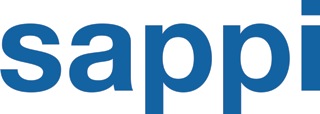Sappi Featured in Fortune Magazine Special Section: The Paper Chase
Despite the Digital Age, the paper industry is thriving and developing sustainable practices to protect the planet
Fortune magazine features Sappi in "The Paper Chase" special section (online PD…
Fortune magazine, January 2013, The Future Issue, special section
A synergy exists between paper and pixels that, in the blur of ever newer and faster devices and applications, generally gets overlooked. Although developed 2,000 years apart, both technologies serve the essential human need to communicate. They also enjoy something of a symbiotic relationship in which paper is routinely converted to digital documents and digital documents to paper.
But while apps can mimic the sound of typewriter keys striking paper and e-readers the rustle of turning pages, what the Digital Age hasn’t yet been able to replace is the tactile sensation of fingers touching fine-grain paper, or the heft and smell of bound books, or the emotional resonance of newspapers read at the breakfast table by generations of families in solitude.
Nor is electronic ink on screens likely to make print on paper obsolete, as some members of the digerati have predicted, anytime soon. In fact, the opposite appears to be the case.
“The World Wide Web, far from decreasing paper consumption, served to increase the amount of printing done at home and in the office,” Abigail J. Sellen and Richard H. R. Harper wrote in The Myth of the Paperless Office. After many offices began using e-mail in the 1990s, paper consumption is estimated to have increased by some 40%.
And thus the Papyrus Age continues. As a saying in Sappi Fine Paper North America’s eQ Journal 004 goes, “Paper: The original wireless communication.”
[…]
Sustainable Products
One company that has embedded strong sustainability programs throughout its operations is Sappi Fine Paper North America, which has mills in Maine and Minnesota. As a producer of coated fine and release papers, as well as market pulp, Sappi is responsible for the production of 1.3 million tons of paper a year.
Known for high-quality products, Sappi believes that print is one of the most effective ways to communicate. The company has invested in the development of resources to advance the future of the industry, from educational resources to sustainability initiatives. In fact, more than 80% of energy used at Sappi North American Mills is from renewable sources, resulting in the lowest reported greenhouse gas emissions among major North American coated free-sheet suppliers.
As part of Sappi’s recycling effort, its Cloquet, Minn., mill embarked on a project to reduce the amount of material sent to landfills. The mill donates boiler ash, a by-product of pulp and paper manufacturing, to neighboring farmers. The alkaline pH content of the ash makes their soil more viable for growing alfalfa, a key food source for dairy farming. Thanks to this program and other reuse programs, the Cloquet mill reduced landfill volume by 75%.
Sappi invests in these initiatives to aid in the well-being of its communities and ensure long-term profitability.
“Our sustainability strategy is our company’s map for the future,” says Jennifer Miller, executive vice president, coated business, and chief sustainability officer at Sappi Fine Paper North America. “These initiatives are integral in driving investment decisions and providing clear insight in to waste and cost-reduction opportunities. Our efforts help us gain market position and connect with customers who look holistically when assessing our performance.”
[…]
Read the full article of the “The Paper Chase” in the January 2013 print issue of Fortune magazine, or download a PDF version online here.




